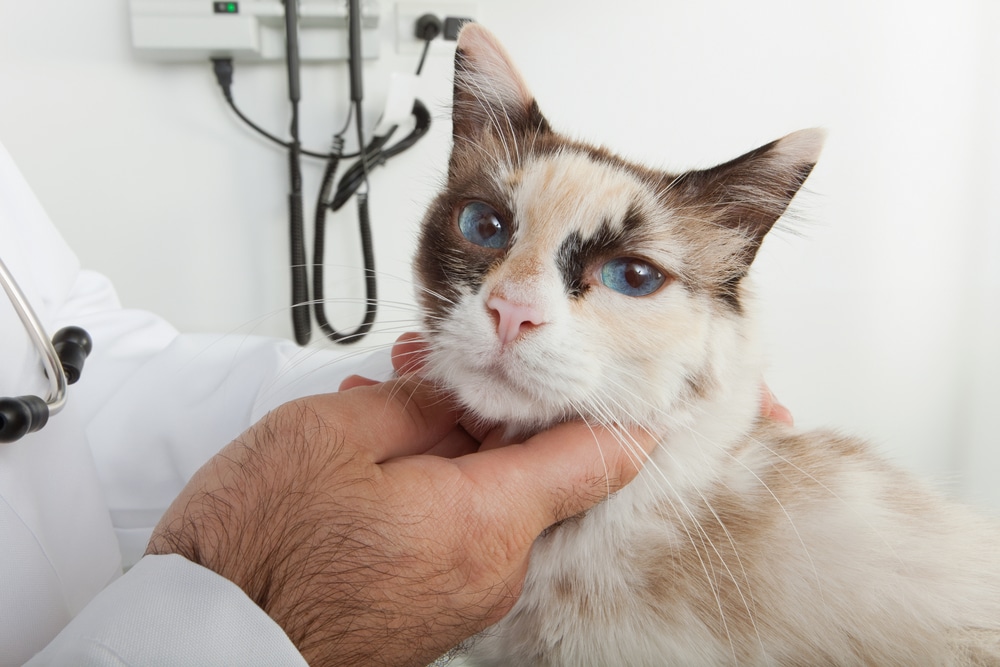neoplasia in cats nose
14 Nevertheless these neoplasms continue to be frequently reported in the literature. In cats there is some indication that chronic rhinitissinusitis may be an initiating factor for the subsequent development of nasal neoplasia.
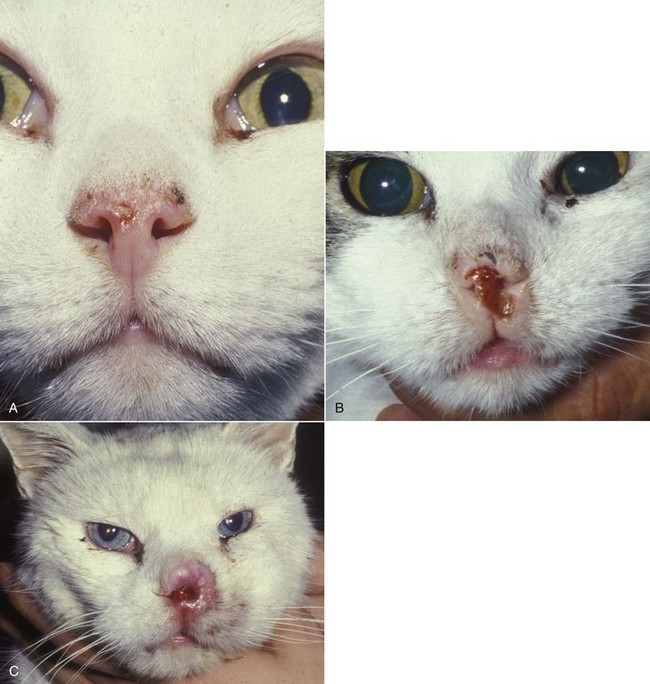
Tumors Of The Respiratory System Veterian Key
Was the most common genus while it was unclassified Bradyrhizobiaceae in cats with nasal neoplasia.

. In cats with nasal neoplasia unweighted UniFrac metric did not show a significant difference using ANOSIM analysis when the microbiome of cats with nasal neoplasia that received antibiotics was compared to cats that did not have a history of antibiotic treatment unweighted UniFrac distance p 0465 weighted UniFrac distance p 0159. JSAP 38 2 78-80 PubMed. Tumors of nasal cavity represent approximately 1 of all tumors in dogs and less common in cats.
2026 Pre-existing nasal damage either due to a foreign body lymphoplasmacytic rhinitis feline rhinotracheitis virus or calicivirus or neoplasia may compromise nasal defense mechanisms and allow fungal infections to take hold. JAVMA 204 1 78-83 PubMed. Tumors of the nose and paranasal sinuses typically are locally invasive and metastasize infrequently.
This blend of vitamins and herbs will ease the symptoms and clear up. Older cats might develop the conditions from dental disease or neoplasia which is the growth of abnormal tissue. Sex predisposition in cats.
Nasal lymphoma has been reported in FeLV positive as well as FeLV negative cats. The most common types of nasal tumors in cats are squamous cell carcinoma SCC lymphoma. There are many different forms of cancer and since the symptoms are so varied any lumps or bumps wounds that dont heal changes in behavior including appetite weight litter.
10 years although cats with non-epithelial tumors may present at an. Final diagnoses in these cats were rhinitis in 27 primary nasal neoplasia in 21 and non-nasal disease in 16. The clinical term for cancer that grows back is neoplasia so if a dog experiences a resurgence of nose cancer it is referred to as nasal cavity neoplasia.
Hematopoietic neoplasms including lymphoma are one of the most common cancers diagnosed and treated in veterinary medicine and account for approximately one-third of all cancers in cats. Neoplasia may also develop inside the nose of both cats and dogs. These symptoms should be checked by your veterinarian.
High individual variability was observed. What are the signs of a chronic upper respiratory infection. Nonocular melanocytic neoplasms are often considered rare neoplasms in cats reported to account for less than 1 of all feline oral neoplasms and approximately 05 of feline cutaneous tumors.
While cancer is usually diagnosed in senior cats certain cancers can develop in cats of any age. Abnormal swellings that persist or continue to grow Sores that do not heal Weight loss Loss of appetite Bleeding or discharge from any bodily opening Offensive odor Difficulty eating or swallowing Hesitation to exercise or loss of stamina Persistent. Fungal infection in the nasal cavities of cats is rare though over the last 20 years several case reports can be found in the literature.
What are the symptoms of nasosinal tumors in cats. Conclusion This study demonstrates that the nose of cats is inhabited by much more variable and diverse microbial communities than previously shown. Neoplasia in cats nose In healthy cats and cats with FURTD Moraxella spp.
You are reading. Lymphoma - Lymphoma is a common form of neoplasia in dogs and cats. This is a real statement from one owner of our Pet Hero pet that received treatment for nose cancer.
Radiation therapy is a powerful treatment option so it is not prescribed for all situations of canine tumors. Malignant early aggressive treatment is essential. Metastasis is more likely in carcinomas and usually occurs late in the disease.
Cancer also called neoplasia presents in many different often nonspecific ways in cats. Neoplasms may also develop inside the nose. Cancer neoplasia affecting the upper respiratory tract is rare but may need to be ruled out in certain cases see handout Nasal Tumors for more information.
2 4 Unlike in dogs 13 however there are no defined prognostic. Male with a male-to-female ratio of 21. Lymphoma is the most common nasal tumor in cats followed by epithelial tumors including adenocarcinoma and squamous cell carcinoma.
In cats 90 of nasal tumors are malignant the most common being lymphoma and the second most common being carcinoma. In cats the most common nasal tumor is nasal lymphoma. Théon A P Peaston A E Madewell B R et al 1994 Irradiation of nonlymphoproliferative neoplasms of the nasal cavity and paranasal sinuses in 16 cats.
1 Nasal lymphoma although an uncommon type of lymphoma is the most common tumor of the nasal cavity in cats. We highly recommend using a natural supplement such as our Sinu Support for Cats. Symptoms of neoplasia in cats include 4.
These signs can include nose bleeding discharge difficulty breathing sneezing facial swelling facial deformity due to growing mass eye discharge weakness andor weight loss. Lymphoma is a common form of neoplasia in dogs and cats characterized by swelling of one or several lymph nodes in the body. Bleeding from the nose breathing difficulty or facial swelling are signs that may indicate neoplasia and should be checked by your veterinarian.
Gender indoor or outdoor housing quality or quantity of nasal discharge bacteriological findings of nasal flushes radiology and CT findings did not differ significantly between cats with neoplasia and cats with ICRS. A nasal tumor is a type of cancer that results from the disorganized uncontrolled production of cells that line the nasal airway. Nasal adenocarcinomas originate from the glandular cells eg sebaceous glands in the nasal cavity.
The signs with highest predictive value for nasal neoplasia were displacement of midline structures 73 unilateral generalised soft tissue opacity 70 unilateral generalised loss of turbinate detail 69 and evidence of bone invasion 64. In a few cats non-cancerous nasal polyps may cause chronic sneezing and discharge. Galloway P E Kyles A Henderson J P 1997 Nasal polyps in a cat.
In healthy cats and cats with FURTD Moraxella spp. Etiologic factors include exposure to smoke indoor kerosene or coal combustion and flea spray. 2 4 Unlike in dogs 13 however there are no defined prognostic features for feline.
The symptoms of nasosinal tumors can overlap with those of other causes of nasal disease. Nasal tumors are less common in cats than in dogs making up about 1 of tumors in cats. 12 Radiation therapy is generally regarded as the gold standard for treatment of nasal lymphoma and treated patients often enjoy long median survival times with reports of 456 days with radiation alone and 174955 days when combined.
Nasal tumors are found in the nasal cavity and the paranasal sinuses and affect cats. Cats with neoplasia were older 3 - 15 median 11 years and showed clinical signs for a shorter period of time 1 - 8 median 2 months than cats with ICRS age 1 - 13. In dogs the most common nasal tumor is nasal adenocarcinoma.
Neoplasia of the nasal cavity can substantially decrease a patients quality. These can cause bleeding from the nose breathing difficulty or facial swelling.
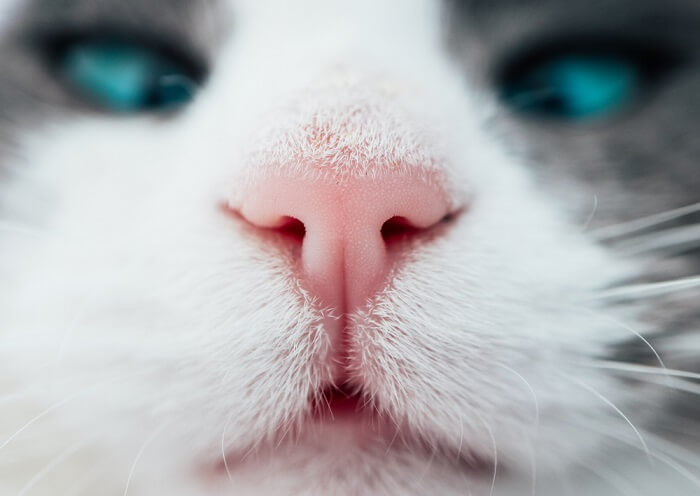
Nose Cancer In Cats Causes Symptoms Treatment All About Cats
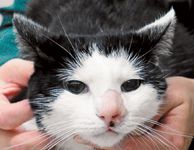
Canine And Feline Nasal Tumors

Learn About Nasal Cancer In Cats Petcure Oncology
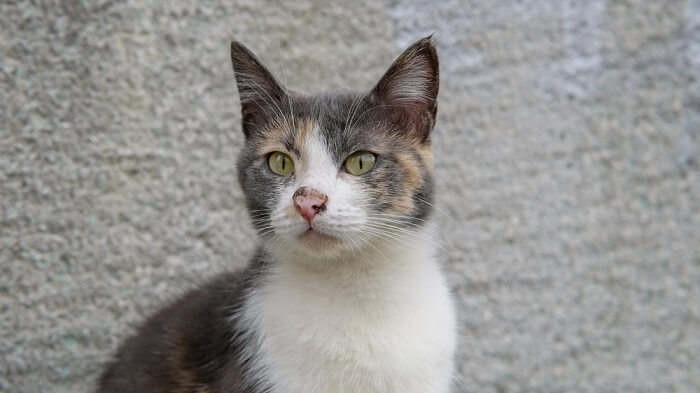
Nose Cancer In Cats Causes Symptoms Treatment All About Cats

Cat 6 Squamous Cell Carcinoma On Nose Stage T2 One Ect Session Download Scientific Diagram
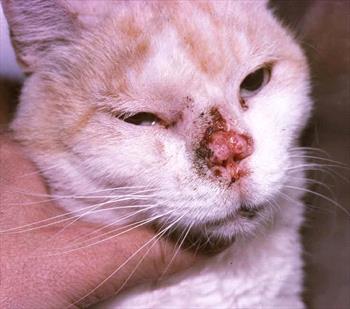
Nasal Squamous Cell Carcinoma In Cats Veterinary Partner Vin
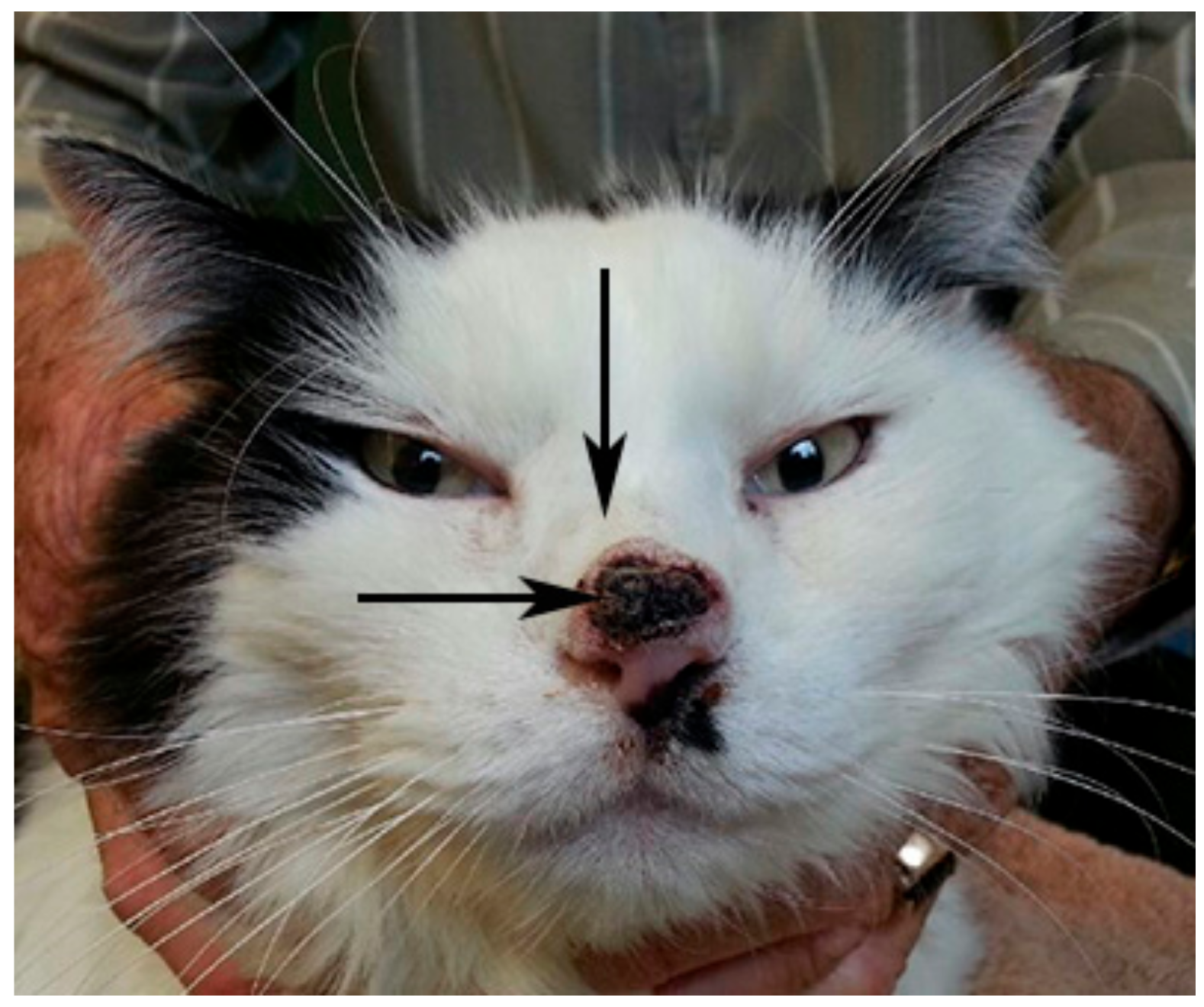
Viruses Free Full Text Identification Of A Novel Papillomavirus Associated With Squamous Cell Carcinoma In A Domestic Cat Html
